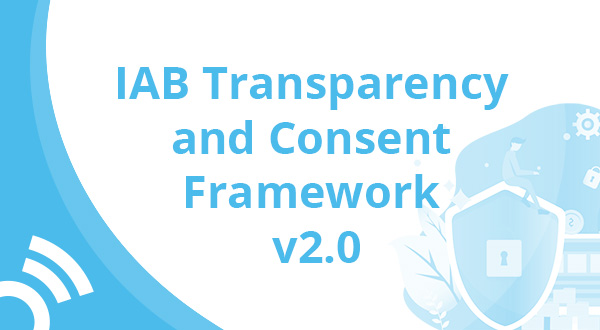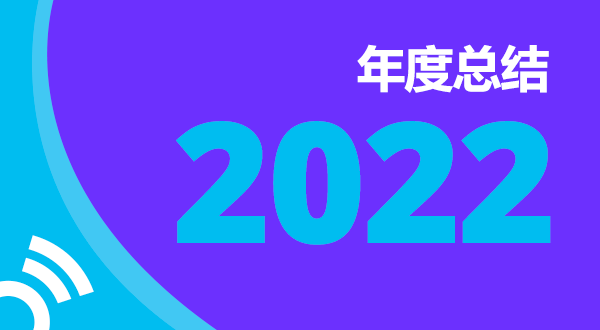In August 2019, the International Advertising Bureau (IAB) Europe, in partnership with the IAB Tech Lab, announced its plan to launch a second iteration of the Transparency and Consent Framework — also known as TCF v2.0. With the transition period from its predecessor (TCF v1.1) set to begin in April 2020, we’re taking a closer look at what this means for publishers and how Smaato can support you throughout the process.
What Is IAB TCF v2.0?
The TCF is a set of guidelines to standardize and simplify the communication process of consent management between a publisher, its ad tech vendors, and advertisers throughout the programmatic advertising industry. It enables all participants to provide interest-based, targeted advertising to consumers in a compliant manner with the European ePrivacy Directive and the General Data Protection Regulation (GDPR).
The TCF makes it easier for all participants to comply with the first steps of gathering consent to collect data for interest-based, targeted advertising and signal that information to ad tech partners and advertisers approved by the consumer.
The IAB states that the key purpose of the framework is to enable consumers the right to grant or withhold consent, or to object to their data being processed for digital advertising. TCF v2.0 also allows consumers more control over how vendors use specific features of their data for processing (e.g., geolocation).
What Is the Timeline for the Launch of TCF v2.0?
As part of the introduction of the new framework, the IAB released its timeline for participants looking to register as compliant with the policy guidelines and its technical implementation:1
- April 30, 2020: TCF v2.0 beta support phase; all Consent Management Platforms (CMPs), ad tech vendors, and advertisers should sign up to the new framework.
- May 31, 2020: Full TCF v2.0 support phase; all registered participants should be able to technically support TCF 2.0 with minimal operational bugs.
- April 30 – June 29, 2020: Transition period for CMPs to fully deploy the new functions to the publisher environment.
- June 30, 2020: Global vendor list and CMP list of TCF v1.1 will no longer be supported (previous deadline).
- August 15, 2020: Global vendor list and CMP list of TCF v1.1 will no longer be supported (new extended deadline).This means that publishers will need a TCF v2.0 CMP solution ready and live at this point in time.
- August 15 – September 30 2020: TCF v1.1 consents strings already created by CMPs until August 15 will be accepted by Smaato. The transition period may be used by CMPs to gradually replace v1.1 consent with v2.0 permissions based on both the consent and “legitimate interests” GDPR legal bases.
- September 30 2020: TCF v1.1 consent strings will no longer be valid.
What Has Been Updated in TCF v2.0 and Why?
The IAB consulted with the programmatic advertising community for a 12 month period prior to the announcement of TCF v2.0. The original version of the TCF was criticized for its lack of focus on publishers and not being able to provide transparent, granular choices for the consumers. As such, the IAB implemented changes to provide better control and flexibility for how the supply side integrates with its technology partners while improving transparency and choice mechanisms for the end-user. Another major obstacle of the previous version was Google’s reluctance to adopt it. However, with TCF v2.0, Google has been involved in the development phase and has stated its intention to integrate with the framework — an indication that wide industry adoption can be expected.
Does TCF v2.0 Offer More Control to Publishers?
TCF v2.0 offers greater power for publishers with regard to how ad tech vendors and advertisers can utilize the data collected on their app or website. A key element is establishing higher levels of transparency throughout the supply chain. The IAB has expanded the list of purposes for processing user data from five to a more granular 10 options (alongside two special purposes) to offer more detail and increased transparency.
Not only does this benefit the publisher, who is able to decide the purposes for which their users can provide data, but it also ensures that consumers can make more informed decisions on how and by whom their personal data is used. The amendments to TCF v2.0 also allow publishers to restrict the purposes for which data of their users is collected by ad tech vendors or advertisers on a per-vendor basis — giving the control back to publishers over their audiences.
By operating inline with TCF v2.0 under the use of an IAB TCF registered CMP, publishers are able to maximize their programmatic ad revenue in Europe and unlock large amounts of valuable demand that would not be available to them without following the guidelines.
What Actions Should Publishers Take to Make the Transition to TCF 2.0?
Choose Your CMP
A Consent Management Platform, or CMP, is an internet-based software tool that is tailored to ask a user for consent where legally required while also listing all available consent options. CMPs can provide options to identify applicability of consent (e.g., ePrivacy Directive and GDPR), list prefered vendors for publishers, and show the data processing purposes and explanatory texts in multiple languages. It stores the choices of the user and provides them with the possibility to opt-out or withdraw any previously-given consent.
Publishers have the option to utilize an IAB-registered CMP, or to implement their own. However, the latter must also be registered to ensure compliance with the framework. If you implemented your own CMP for IAB TCF 1.1 and haven’t registered it, or if you work with a CMP that is not registered by the IAB, those solutions will not work anymore in TCF 2.0, even if they technologically support the new requirements.
Furthermore, publishers should request for vendor and purpose consents as outlined by the IAB Europe and as advised by their preferred ad tech vendors and advertisers. It’s important to be aware that the European ePrivacy Directive requires you to collect previous consent to store and/or access any kind of information (also non-personal technical information) on a consumer’s device. Therefore, you need to assess which of your ad tech vendors and advertisers also require the “Purpose 1” (i.e., store and/or access information on a device) within the IAB TCF 2.0 to operate in Europe.
Reach Out to Smaato
Smaato complies with the IAB Transparency and Consent Framework v1.1, as well as with the future version 2.0 under the vendor ID #82. We are currently working in the beta support phase and can put you in contact with our preferred CMP partner for an in-app viable CMP solution. If you aren’t already in conversations with your Smaato account manager, please reach out to them to discuss how we can support you through this period of change. We can help conduct the necessary tests and ensure a smooth transition to TCF v2.0.




